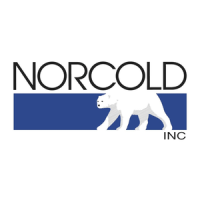Owner’s Manual 9
Defrosting
The cooling ns of the refrigerator operate at below freezing temperature and will naturally form frost from humidity, which is always
present in the air. The humidity inside the refrigerator increases:
- with higher outside temperature and humidity.
- with the storage of non-sealed fresh foods or warm foods.
- with the amount of time that the door(s) are open.
- with any air leakage into the refrigerator.
Although the refrigerator is not frost -free, it is made to limit frost on the cooling ns. At regular intervals, the temperature control system
automatically melts most of the frost from the cooling ns. The water from the cooling ns drains into a collection cup that is attached to
the back of the refrigerator. The heat of the cooling system evaporates the water from the collection cup.
It is normal for frost to collect inside the freezer. Excess frost decreases the cooling performance of the refrigerator. Defrost the
refrigerator and freezer as necessary:
- Remove all food from the refrigerator.
- Turn the refrigerator OFF.
Defrosting the refrigerator makes excess water inside the refrigerator.
- Remove the drain hose from the drip cup at the rear of the refrigerator.
- Put the drain hose into a half-gallon or larger container to capture water.
- Put dry towels (etc.) inside the refrigerator and freezer to absorb melted frost.
High temperatures can cause the inside surfaces of the refrigerator to warp or melt. Do not use pans of
HOT water, a hair dryer, or any other high temperature devices to defrost the refrigerator. Do not use any
hard or sharp objects to remove frost. Damage to the interior of the refrigerator can occur.
- To increase the speed of defrosting, put pans of WARM water in the refrigerator and freezer.
- Remove the wet towels (etc.) and dry the interior.
- Remove the drain hose from the large container and put the drain hose back into the drip cup.
- Remove the large container from the enclosure.
- Start up the refrigerator.
- Allow the refrigerator to cool down.
- Return all food to the refrigerator.
- When in propane gas operation, examine the appearance of the ame. See “Gas Flame Appearance”.
- Make sure the air ow in the lower intake vent, through the refrigerator coils and condenser, and out the upper exhaust vent is not
blocked or decreased.
- Make sure the area behind the refrigerator is clear. Do not use the area behind the refrigerator for storage of anything, especially
gasoline and other ammable vapors and liquids.
NOTICE
CAUTION
!

